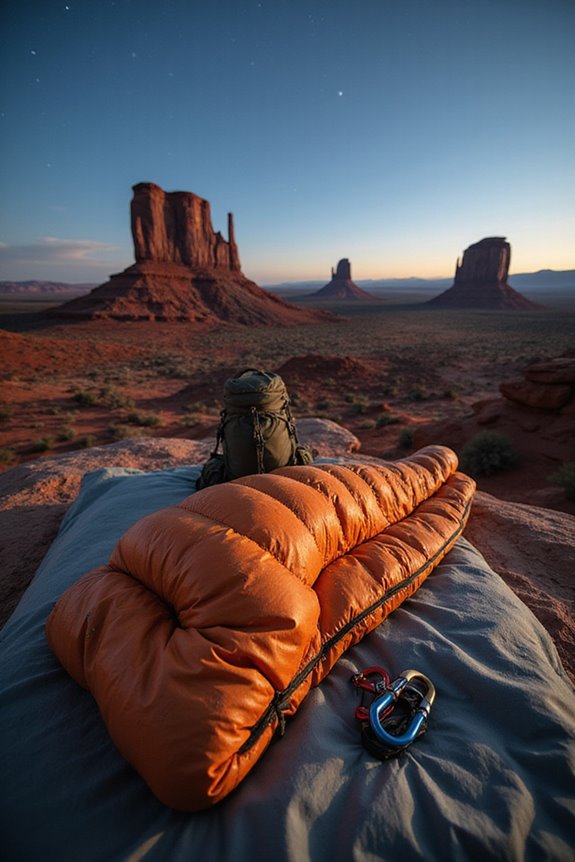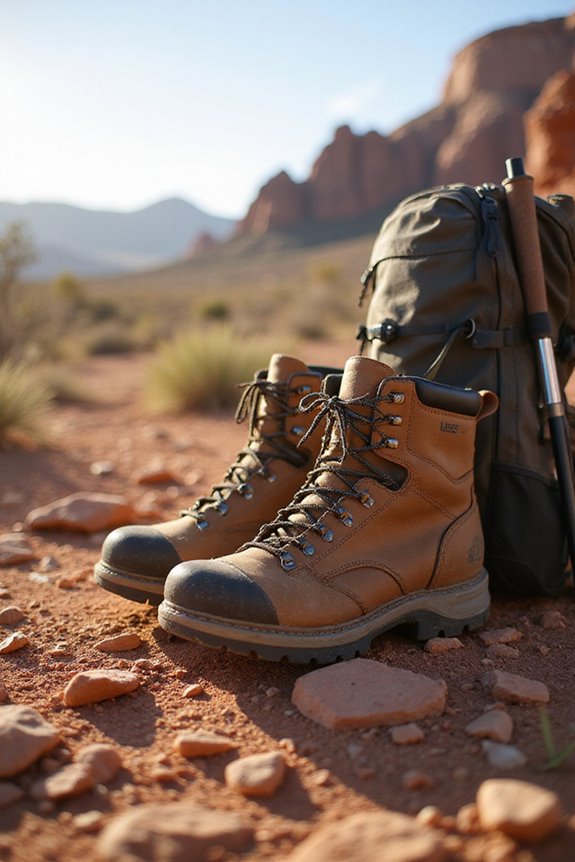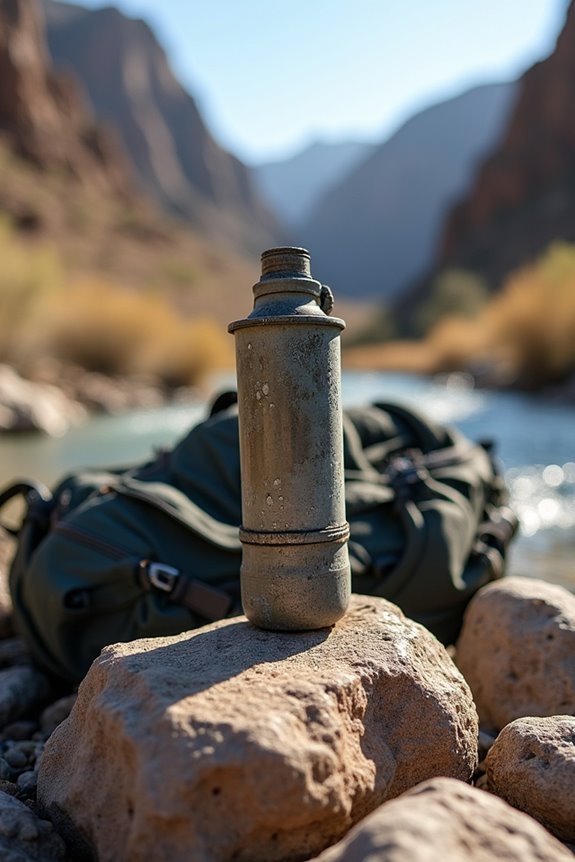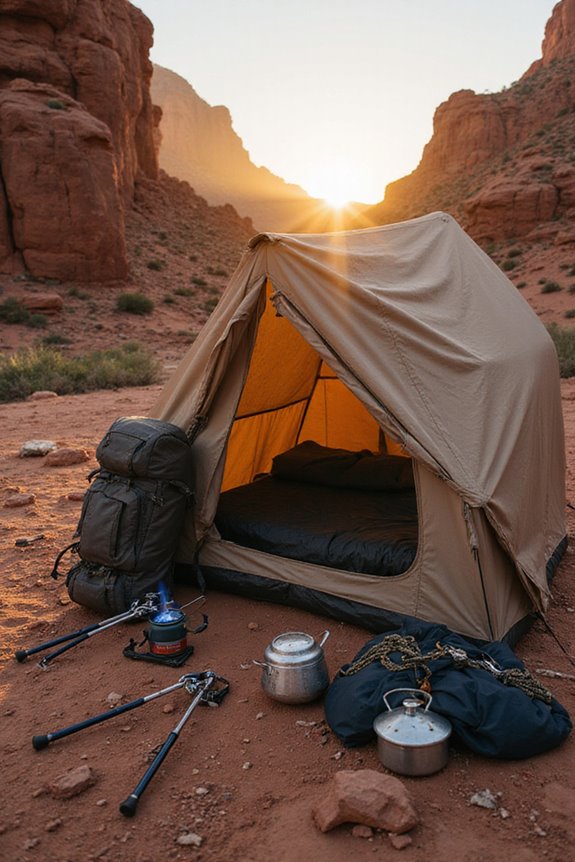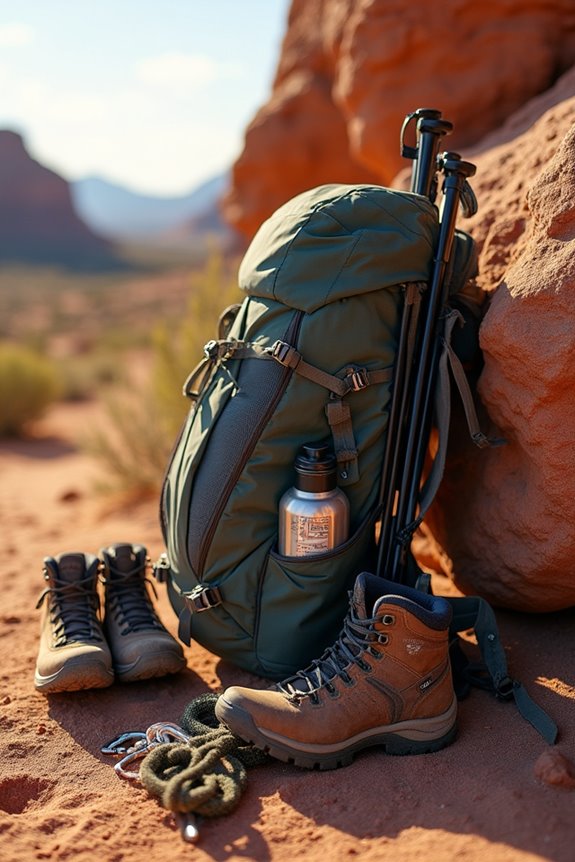When it comes to the best gear for sleeping bags, we need to choose wisely! We’ll want to reflect on types like mummy or rectangular bags, depending on our adventure. Insulation matters too – down’s super warm and compressible, while synthetic stays warm even if it gets wet. Don’t forget sleeping bag liners for extra comfort and warmth, plus durable materials for longevity! If we want to level up our camp snooze game, stick around for more tips!
Key Takeaways
- Choose the right type of sleeping bag (rectangular, mummy, or double) based on your camping style and warmth needs.
- Opt for high fill power down insulation (600-800) for superior warmth and packability, especially in cold conditions.
- Use a sleeping bag liner to keep your bag clean and enhance warmth, with synthetic liners performing best in damp environments.
- Select durable materials, like ripstop nylon, that ensure longevity and resistance to abrasion for your sleeping bag.
- Pay attention to temperature ratings (EN certified), ensuring the bag is suited for the climates you plan to encounter.
Types of Sleeping Bags
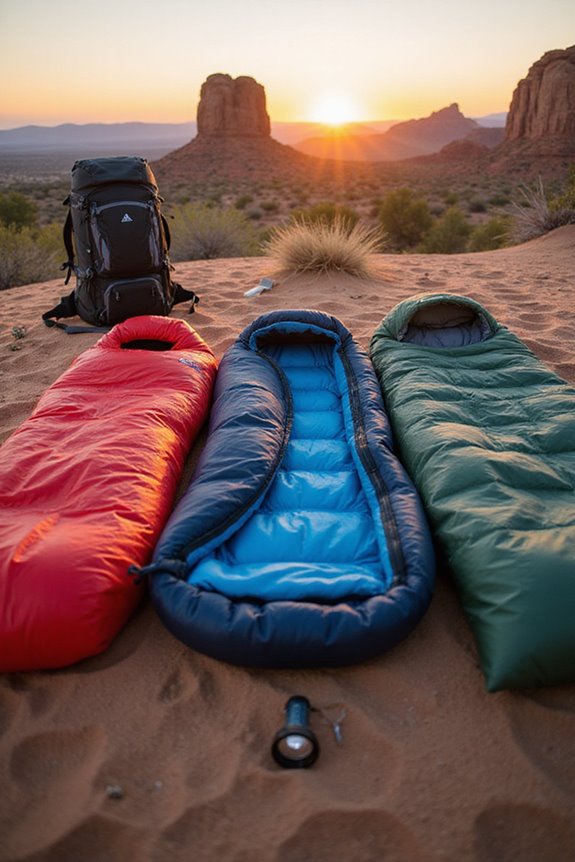
When it comes to choosing the right sleeping bag, we’re often faced with a jungle of options—five main types, to be precise! Each type serves unique adventures and design considerations that cater to our user preferences.
First up, rectangular bags offer space galore—great for lazy car camping! Mummy bags, on the other hand, are our secret weapons for cold nights, wrapping us snugly in warmth. Want to snuggle with a buddy? Go for a double bag!
And if we have little ones, don’t forget those kid-sized bags that keep them cozy. Semi-rectangular bags split the difference, giving us enough room to move while keeping us toasty. For optimal warmth in extreme conditions, look for mummy-shaped designs with high fill power down insulation that offers superior heat retention while remaining lightweight. Whatever choice we make, the right bag can elevate our journeys to the next level!
Insulation Options Explained
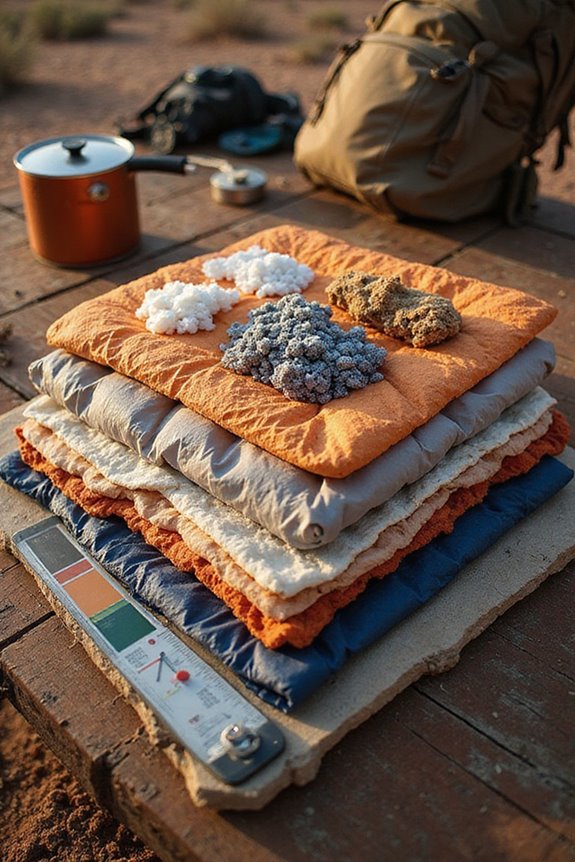
Choosing the right insulation for your sleeping bag can feel like maneuvering through a maze, especially when you want to stay warm during your adventures! Let’s break it down. Down insulation boasts incredible warmth-to-weight efficiency, making it ideal for ultralight backpackers. Its compressibility means you can pack it tight—an absolute game changer on the trail. However, if moisture hits, it can lose some of that magic.
On the flip side, synthetic insulation is a reliable buddy, maintaining warmth even when wet. It’s heavier and bulkier but perfect for damp conditions. Hybrid options combine the best of both worlds, balancing insulation efficiency and managing compression impact, so we stay cozy no matter what Mother Nature throws at us! For optimal warmth without added weight, look for sleeping bags with 600-800 fill power down insulation, which offers superior performance in cold conditions while maintaining ultralight characteristics.
Essential Accessories for Your Sleeping Bag
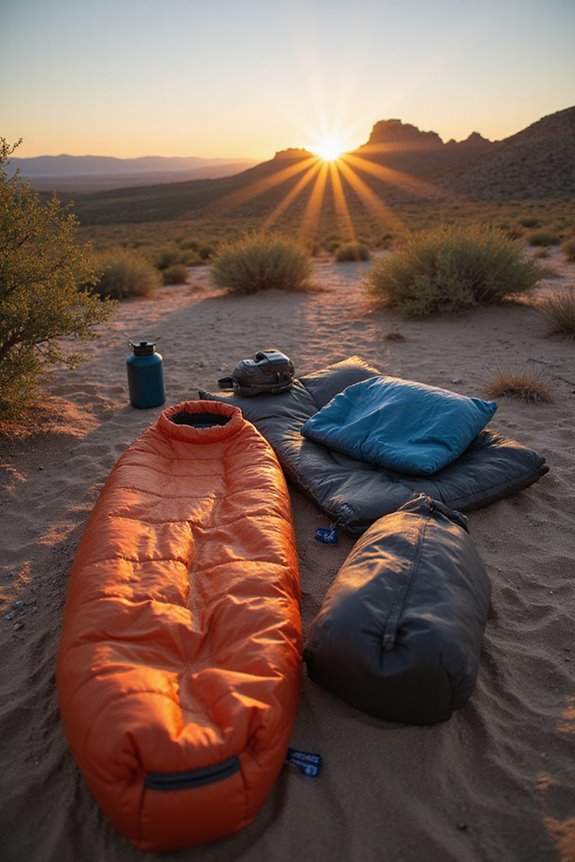
After getting a solid grasp on insulation options, it’s easy to overlook the little things that can amplify our sleeping bag experience. One essential accessory we can’t forget is a sleeping bag liner. These marvels keep our bag clean and add warmth, just like a cozy blanket at home. Plus, you’ve got options—silk, fleece, or cotton—each with its unique vibe. Synthetic materials generally perform better in wet weather conditions than down alternatives, making them a reliable choice for unpredictable outdoor adventures.
Let’s not forget compression sacks! They magically shrink our sleeping bags for easier packing, ensuring we’ve got room for that extra chocolate stash. When it’s time to store our bags, we should choose breathable storage sacks to maintain insulation loft. Trust me, these accessories not only improve our comfort but extend our sleeping bag’s life, making those starlit adventures even better!
Material Considerations for Durability
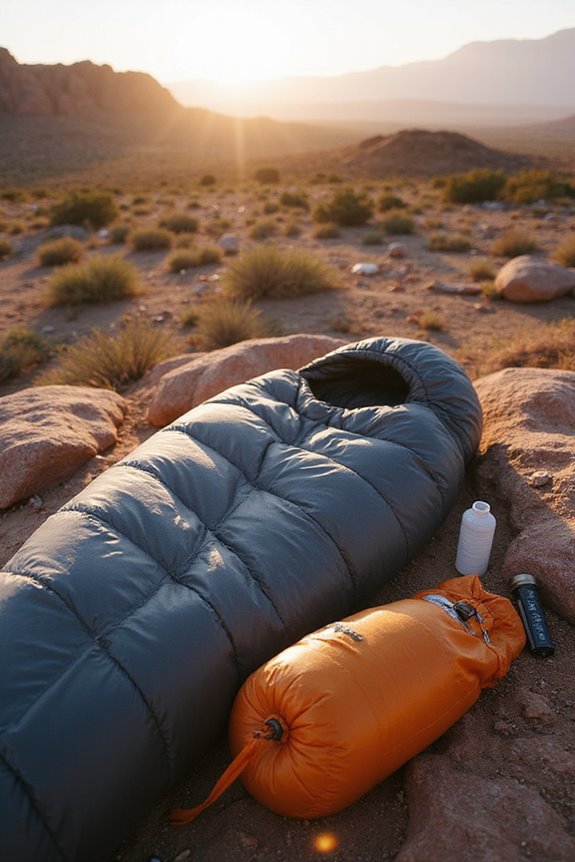
While we all dream of cozy nights under the stars, the materials in our sleeping bags can make or break that dream. When choosing a bag, we must consider fabric longevity and abrasion resistance. Down insulation might be pricier initially, but with proper care, it can last up to 15 years! That’s like a trusty sidekick for our adventures. On the other hand, synthetic fills have a shorter lifespan, lasting 2-4 years.
Look for durable shell materials like ripstop nylon or polyester to withstand the wear and tear of the wild. Premium bags like Naturehike utilize 400T ripstop nylon for exceptional waterproofing and durability in harsh conditions. With reinforced stitching and clever design elements, we can enjoy our freedom without worrying about our gear falling apart. Let’s choose wisely and keep those outdoor dreams alive!
Understanding Temperature Ratings
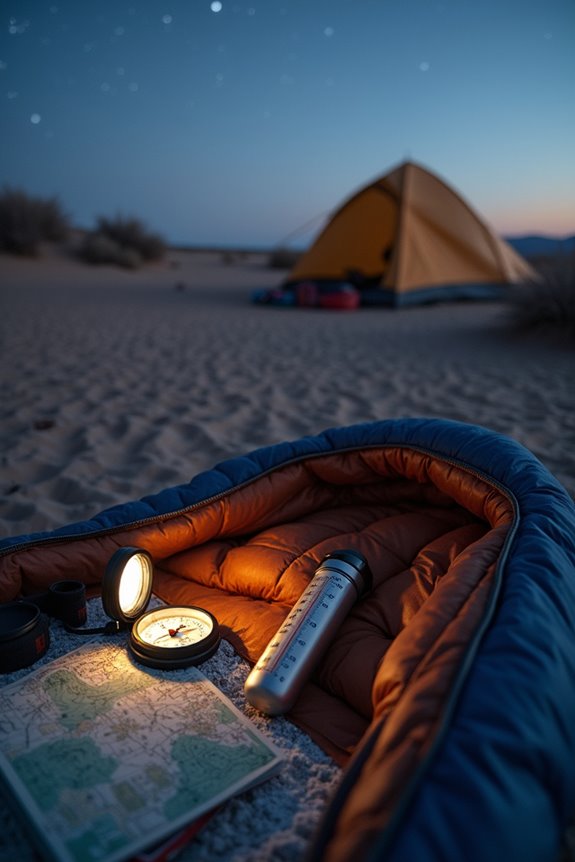
When it comes to understanding temperature ratings for sleeping bags, it’s all about keeping your cozy dreams alive on those chilly nights outside! We’ve all been there—snuggled in our bags, but wondering if we’re warm enough. The EN rating‘s got our back by providing comfort and lower limit temperatures based on lab tests. Just remember, these ratings are guidelines, not magic spells. Factors like temperature variability, insulation, and our own body metabolism play a huge role in real-world warmth. So, if you’re heading to a colder spot, go for a bag rated just below those freezing temps. Trust us, those extra degrees are game-changers! And hey, check for rating certifications to make sure you’re getting the goods. Understanding the difference between comfort rating and extreme rating helps you choose the right sleeping bag for your specific outdoor conditions and personal temperature preferences. Stay warm, adventurers!
Storage and Maintenance Tips
Whether you’re gearing up for a weekend retreat in the woods or just dreaming of that perfect camping trip, keeping your sleeping bag in top shape can feel like a quest of its own. We’re all about maximizing comfort and longevity, so let’s plunge into some storage and maintenance tips!
First off, always give your bag a good cleaning after a trip. Use gentle cleaning methods, and make sure it’s completely dry before storage to avoid mildew. A cool, dry, dark place with proper ventilation is essential for long-term storage. Ditch those compression sacks; instead, let your bag breathe in a large cotton sack. And don’t forget to check it regularly for any damage. With these tips, our sleeping bags will stay ready for adventure!
Upgrading Your Sleep System With Accessories
Upgrading your sleep system with the right accessories can make all the difference for a cozy night under the stars! We can enhance comfort and warmth by adding sleeping bag liners—those silky saviors that boost insulation without the weight of an extra bag. Plus, the versatility of these liners fits any sleeping bag shape!
Let’s not forget about buckle straps; they’re game-changers for packing. Seriously, for under $10, they simplify rolling and securing our bags, making backpacking a breeze. Finally, investing in compression solutions guarantees our gear is compact and organized, freeing up space for that delicious trail mix. With these sleep system accessories, we’ll be restless no more as we drift into dreamland! Happy camping!
Frequently Asked Questions
Can I Use a Sleeping Bag in a Hammock?
Yes, we can use a sleeping bag in a hammock, but ensuring sleeping bag compatibility is key for ideal hammock insulation. We should look for designs that maintain warmth while allowing us the freedom to move comfortably.
How Do I Choose a Sleeping Bag for Backpacking?
When we’re out chasing freedom under the stars, let’s not forget sleeping bag materials and temperature ratings do matter. A cozy bag should breathe well, embrace warmth, and snugly wrap us like a dream.
What Is the Difference Between Regular and Long Sleeping Bags?
When considering sleeping bag sizes, we’ve found that long bags offer extra insulation and space for taller users. They guarantee comfort while minimizing cold spots, giving us the freedom to sleep peacefully in various conditions.
Are There Sleeping Bags Suitable for Extreme Cold Conditions?
When we whisper our dreams into the crisp cold night, we find jewels among sleeping bags tailored for extreme insulation and cold weather. They cradle us in warmth while we chase the wild adventure of the unknown.
How Do I Clean and Maintain My Sleeping Bag?
When it comes to sleeping bag maintenance, we should wash our sleeping bags annually. Carefully follow care labels, use mild detergents, and dry them properly to keep them fresh and long-lasting for our adventures ahead.

